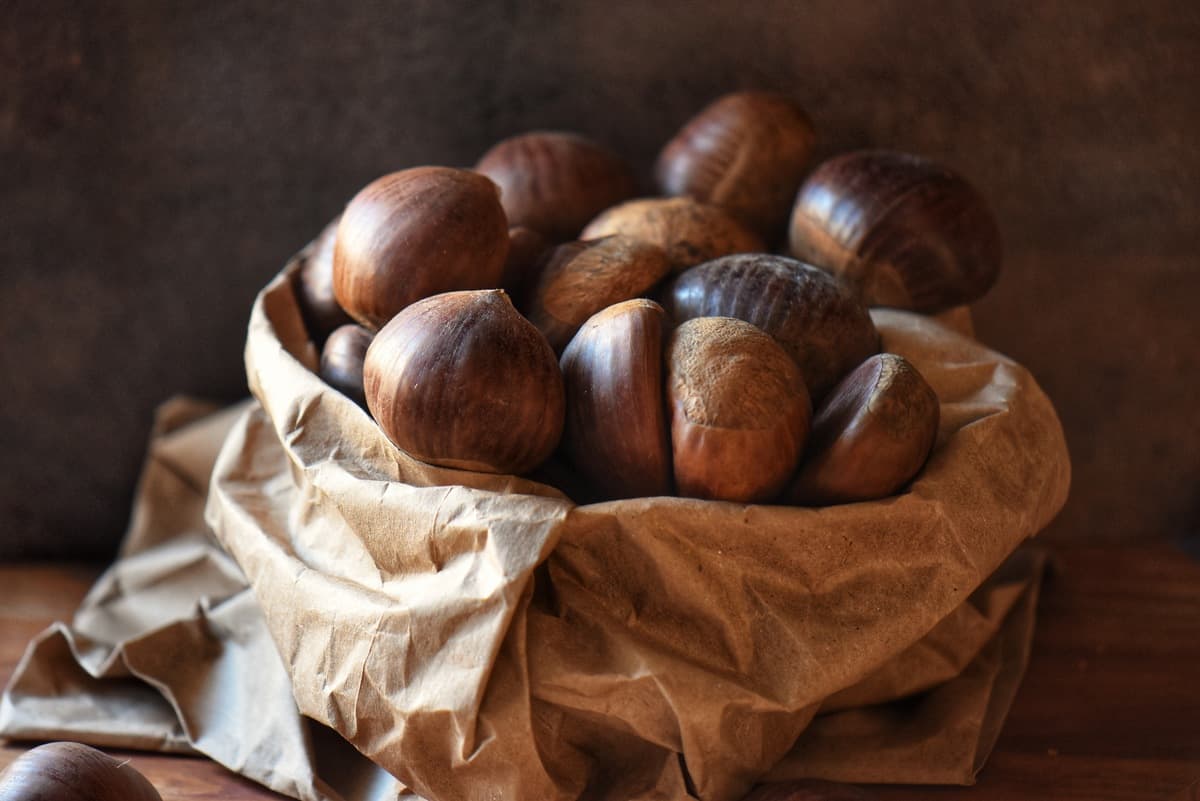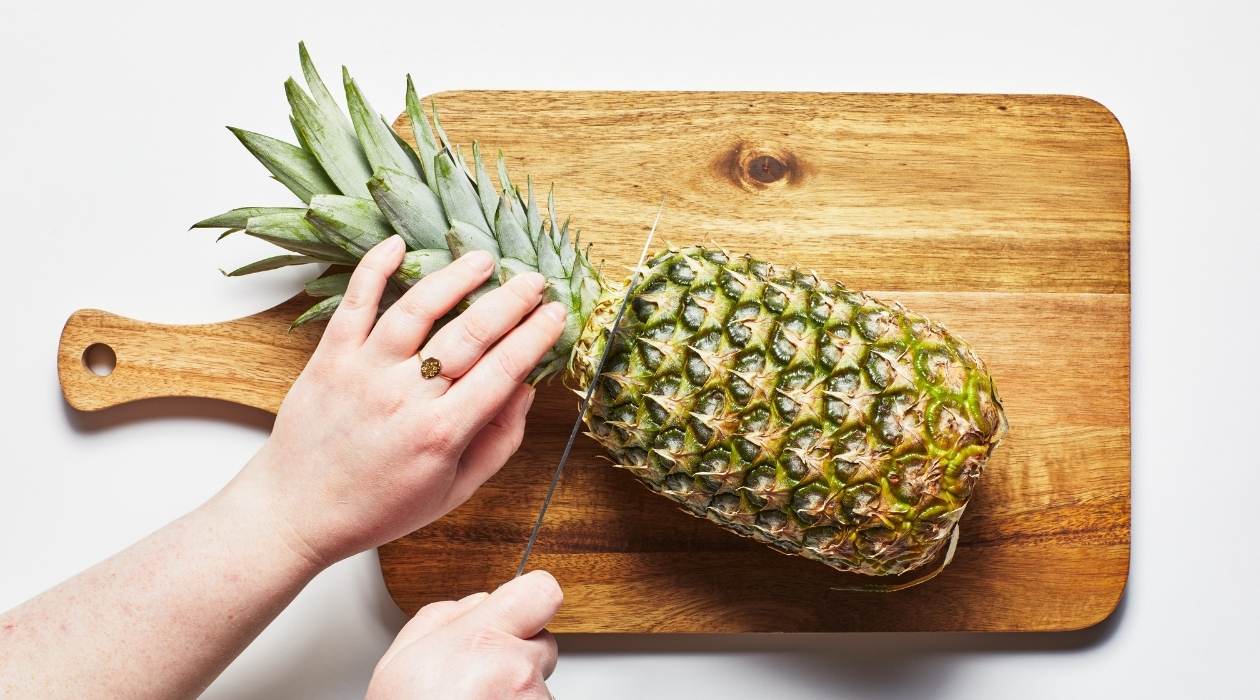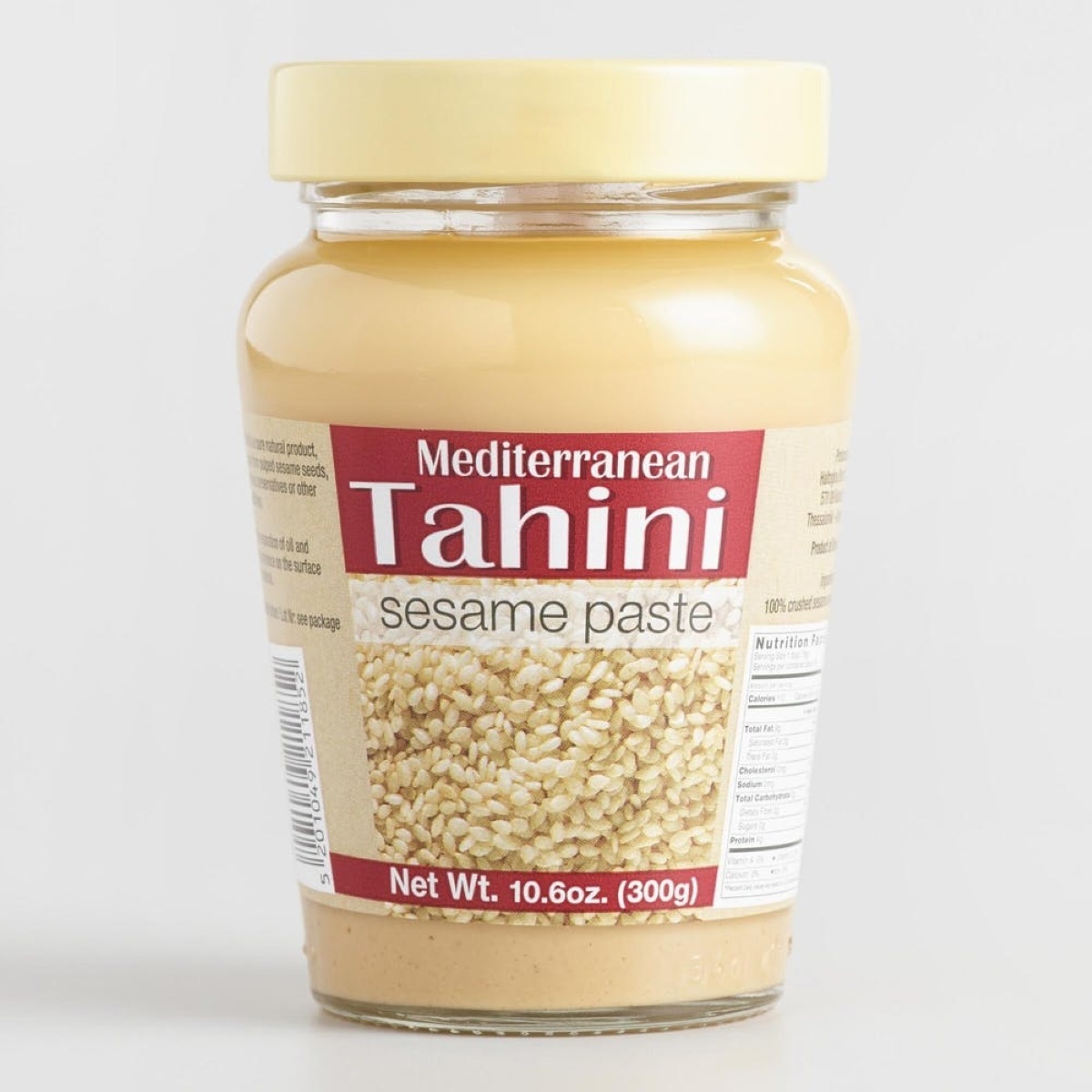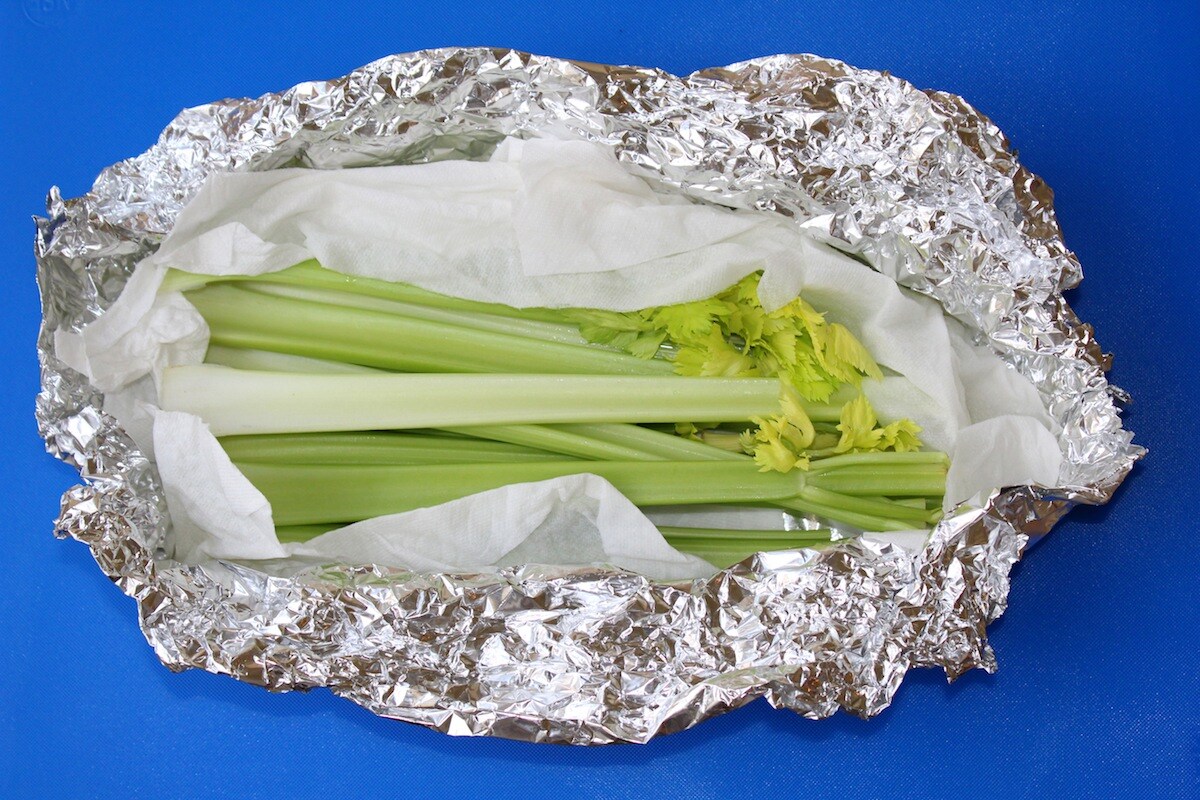

Articles
How To Store Galangal
Modified: January 6, 2024
Learn the best methods for storing galangal in this informative article. Discover tips and tricks for preserving the freshness and flavor of this aromatic root.
(Many of the links in this article redirect to a specific reviewed product. Your purchase of these products through affiliate links helps to generate commission for Storables.com, at no extra cost. Learn more)
Introduction
Galangal is a highly aromatic root that is widely used in Southeast Asian cuisine. It belongs to the ginger family and has a unique flavor profile that is earthy, citrusy, and slightly spicy. Not only does galangal add a delightful taste to dishes, but it also boasts several health benefits.
In order to fully enjoy the flavors and benefits of galangal, proper storage is crucial. Storing galangal correctly ensures that it remains fresh and retains its distinctive essence for as long as possible.
In this article, we will explore what galangal is, its benefits, and most importantly, how to store galangal to maintain its quality and freshness.
Key Takeaways:
- Properly storing galangal is essential to preserve its unique flavor and health benefits. Follow simple steps like refrigeration and avoiding common mistakes to extend its shelf life and enhance your culinary experience.
- Don’t let the distinctive essence of galangal go to waste! By storing it correctly, including freezing and making galangal paste, you can enjoy its flavors and health advantages for an extended period.
Read more: How To Store Basil From Store
What is Galangal?
Galangal, also known as “Greater Galangal” or “Thai Ginger,” is a rhizome that is native to Southeast Asia. It is a key ingredient in many regional cuisines, including Thai, Indonesian, and Malaysian. Galangal has a similar appearance to ginger, with a brownish skin and a firm, knobby texture.
Although galangal is often referred to as “Thai ginger,” it has a distinct flavor and aroma that sets it apart. The taste is complex, with hints of citrus and pine, and it adds a wonderful depth to dishes.
Galangal has been used for centuries in traditional medicine due to its many therapeutic properties. It is known for its anti-inflammatory, antioxidant, and antibacterial benefits. It is also rich in essential oils, vitamins, and minerals, making it a nutritious addition to your diet.
Overall, galangal is a versatile and flavorful ingredient with a wide range of uses in both culinary and medicinal applications. Understanding how to store it properly will help ensure that you can enjoy its unique characteristics to the fullest.
Benefits of Galangal
Galangal not only adds a delightful flavor to dishes but also offers numerous health benefits. Here are some key benefits of including galangal in your diet:
- Anti-inflammatory properties: Galangal contains compounds with powerful anti-inflammatory properties. It has been used traditionally to relieve pain and inflammation associated with conditions like arthritis.
- Antioxidant-rich: The high antioxidant content of galangal helps protect the body’s cells from damage caused by free radicals. This may contribute to a reduced risk of chronic diseases.
- Digestive aid: Galangal has been used for centuries to support digestion. It can help alleviate symptoms such as bloating, gas, and indigestion.
- Boosts immune system: The antimicrobial properties of galangal help strengthen the immune system and protect against infections. It can also help relieve symptoms of the common cold and flu.
- Improves circulation: Galangal acts as a natural blood thinner, improving blood circulation and reducing the risk of blood clots. It may also help lower high blood pressure.
- Relieves nausea and motion sickness: Taking galangal can help alleviate nausea and vomiting associated with morning sickness, motion sickness, and chemotherapy-induced nausea.
- Aids in weight management: Galangal may help support weight loss efforts by boosting metabolism and promoting fat burning.
- Improves cognitive function: Studies have shown that galangal may have a positive effect on brain health, improving memory, focus, and overall cognitive function.
These are just some of the many benefits that galangal has to offer. With its unique flavor and numerous health advantages, it’s no wonder galangal is widely valued and used in various cuisines and traditional remedies.
Proper Storage of Galangal
Proper storage is essential to preserve the freshness and quality of galangal. Here are some guidelines to follow:
- Keep it whole: It is best to store galangal in its whole form, as this helps retain its natural oils and flavor. Avoid cutting or peeling it until you are ready to use it.
- Choose fresh galangal: When purchasing galangal, look for firm and plump roots with smooth skin. Avoid any that appear shriveled or have moldy spots.
- Store in the refrigerator: Galangal should be stored in the refrigerator to maintain its freshness. Wrap it in a slightly damp paper towel to prevent it from drying out and place it in a plastic bag or an airtight container.
- Avoid moisture: While a slightly damp paper towel helps keep galangal from drying out, excessive moisture can lead to spoilage. Make sure the paper towel is not dripping wet and replace it if it becomes too damp.
- Keep away from ethylene-producing fruits: Galangal is sensitive to ethylene gas, which is produced by certain fruits like apples and bananas. Store galangal away from these fruits to prevent them from ripening and spoiling more quickly.
By following these storage guidelines, galangal can stay fresh for up to two weeks in the refrigerator. However, for longer storage, you can consider freezing galangal.
Store galangal by wrapping it in a paper towel and placing it in a resealable plastic bag in the refrigerator. It can also be stored in the freezer for up to 6 months.
Step-by-Step Guide to Store Galangal
Here is a step-by-step guide on how to properly store galangal to maintain its freshness:
- Choose fresh galangal: Select firm and fresh galangal roots with smooth skin. Avoid any that have soft spots or signs of mold.
- Keep it whole: Do not cut or peel the galangal until you are ready to use it. Keeping it whole helps preserve its flavor and natural oils.
- Prepare for refrigeration: Wrap the galangal in a slightly damp paper towel. This helps prevent it from drying out in the fridge.
- Use an airtight container or plastic bag: Place the wrapped galangal in an airtight container or a sealed plastic bag. This helps prevent moisture loss and keeps the galangal fresh.
- Store in the refrigerator: Put the container or bag of galangal in the refrigerator. Make sure it is placed in a cool section where the temperature remains consistent.
- Check periodically: Check the galangal periodically to ensure it remains fresh. If the paper towel becomes too damp, replace it to prevent moisture buildup.
By following these steps, you can extend the shelf life of galangal and enjoy its unique flavor and aroma for longer periods.
Read more: How To Store Store-Bought Bread
Tips for Extending Galangal Shelf Life
If you want to extend the shelf life of galangal even further, here are some additional tips to consider:
- Freezing galangal: If you have more galangal than you can use within a couple of weeks, consider freezing it to preserve its freshness. Peel and slice the galangal into small pieces, then store them in airtight containers or freezer bags. Frozen galangal can last for several months.
- Blanching before freezing: To help maintain the flavor and texture of galangal when freezing, blanch the slices in boiling water for a minute before draining and freezing. This process helps preserve the galangal’s quality during freezing and thawing.
- Label and date: When freezing galangal or storing it in the refrigerator, label the containers or bags with the date. This ensures that you can keep track of how long the galangal has been stored and use the oldest ones first.
- Grate when needed: Instead of thawing a whole piece of frozen galangal, grate the desired amount directly from the frozen state when you need it. This saves time and keeps the rest of the galangal frozen for future use.
- Consider making galangal paste: If you have a surplus of galangal, you can make galangal paste by blending it with other ingredients like ginger, garlic, and oil. Store the paste in small airtight jars in the refrigerator or freezer for convenient use in various recipes.
By following these tips, you can make the most of your galangal and enjoy its flavors and benefits for an extended period of time.
Common Mistakes to Avoid when Storing Galangal
When it comes to storing galangal, there are a few common mistakes that should be avoided to ensure its longevity and quality. Here are some key mistakes to steer clear of:
- Not checking for freshness: It’s important to choose fresh galangal roots when purchasing them. Avoid roots that are soft, moldy, or have a strong unpleasant odor.
- Storing in a damp environment: While keeping galangal slightly damp is beneficial, storing it in a wet or overly humid environment can cause it to rot quickly. Make sure the paper towel is only slightly moist and not dripping wet.
- Allowing exposure to ethylene: Galangal is sensitive to ethylene gas, so it’s important to store it away from ethylene-producing fruits like apples and bananas. Ethylene can cause galangal to spoil faster.
- Leaving it unsealed: Properly sealing galangal in an airtight container or bag is crucial to prevent moisture loss and maintain freshness. Leaving it unsealed can lead to dehydration and deterioration of the root.
- Freezing without proper packaging: When freezing galangal, it’s important to use airtight containers or freezer bags to prevent freezer burn. Improper packaging can cause the galangal to develop freezer burn, affecting its quality.
- Thawing and refreezing galangal: Refreezing galangal after it has been thawed can affect its texture and flavor. It’s best to thaw only the amount you need, rather than thawing the entire batch and refreezing it multiple times.
By avoiding these common mistakes, you can ensure that your galangal stays fresh and maintains its flavor and quality for an extended period of time.
Conclusion
Galangal is a unique and flavorful root that adds an aromatic touch to Southeast Asian cuisine. With its earthy, citrusy, and slightly spicy flavor profile, galangal is not only a culinary delight but also offers numerous health benefits.
Properly storing galangal is crucial to maintain its freshness and preserve its distinct qualities. By following the guidelines discussed in this article, including keeping it whole, choosing fresh galangal, storing it in the refrigerator, and avoiding moisture and exposure to ethylene gas, you can extend its shelf life and enjoy its flavors for a longer period.
Additionally, freezing galangal and making galangal paste are effective ways to store surplus roots and make them accessible for future use. Just be sure to label and date your stored galangal to keep track of its freshness.
Avoiding common mistakes such as not checking for freshness, storing in a damp environment, exposure to ethylene, leaving it unsealed, improper freezing and thawing, can help you maintain the quality of galangal and avoid unnecessary waste.
Now that you have a comprehensive understanding of how to store galangal properly, you can confidently enjoy its unique flavor and reap the benefits it offers in your cooking. Don’t hesitate to experiment with galangal in various recipes and explore the diverse ways in which it can enhance your culinary experience.
So go ahead, savor the extraordinary taste of galangal and discover a whole new world of flavors and health benefits!
Frequently Asked Questions about How To Store Galangal
Was this page helpful?
At Storables.com, we guarantee accurate and reliable information. Our content, validated by Expert Board Contributors, is crafted following stringent Editorial Policies. We're committed to providing you with well-researched, expert-backed insights for all your informational needs.















0 thoughts on “How To Store Galangal”